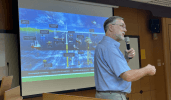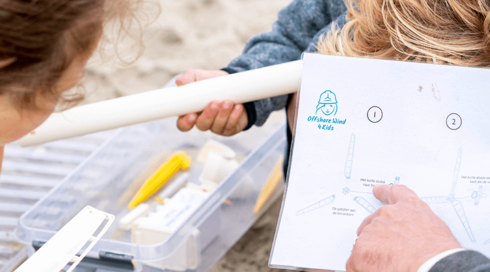23 September 2016
A professional’s dream to work offshore can come from anywhere; from family holidays by the sea through to exploration, an interest in the environment or travel, science and innovation. “I studied Physical Geography at University College London, I always had a strong interest in volcanicity and seismology,” explains Senior Geophysicist George Mackintosh. “While I was studying, some fellow students and I organised a trip to Montserrat in the West Indies for our dissertations. The Soufrière Hills volcano had erupted and destroyed the island’s Georgian era capital city of Plymouth. It was both a poignant and fascinating experience and strengthened my interest in volcanicity and geology.”
Mitigating Hazards
After university, George set up his own company in Barbados, “My friend and I wanted to set up a company that focussed on mitigating environmental hazards caused by industry. We conducted surveys for pollution threats to underground reservoir systems; in the Caribbean there weren’t many environmental controls, and introducing oils into the ecosystem was a common occurrence. Eventually I decided that I wanted to diversify and work in renewable energy. Luckily I had established strong connections at university and so I decided to go along this route.”
NEMO Power Plant
Having worked through Atlas Professionals for many years, George was introduced to a project that was fairly unique to the offshore industry. The NEMO project is for an Ocean Thermal Energy Conversion (OTEC) power plant based off the island of Martinique. The power plant uses the temperature difference between water at depth and at surface to generate electricity. “Projects like these are rare,” explains George, “so having the opportunity to work on one was interesting. As far as I’m aware this plant will be the biggest one in operation and is scheduled for completion by 2020. I worked as a Senior Geophysicist on the project with MMT. I have always had good experiences with this company and I was keen to work with them again. The survey equipment for that project was relativity standard and involved an ROV. The operations were more complex, as it was quite difficult to fly the ROV over a rugged seabed, low enough but not hitting anything. The geophysical team had challenges too as there was a massive amount of pyroclastic flow and volcanic debris, so it was also quite complicated to interpret the geology. Given the constraints, the survey was very successfully conducted.
The NEMO project was definitely the most unusual project I’ve worked on just because of the environmental difficulties and the type of installation planned. Surveying with an aggressive increase in water depth to about 1,650 metres near-shore was a challenge. The site was also interesting for its historical value. The volcano near the plant, Mount Pelée, erupted in 1902 and killed 30,000 people, one of only two recorded survivors was a prisoner who was in a poorly ventilated cell.”
The power plant will aim to supply electricity to at least 35,000 homes and reduce the carbon footprint by over 80,000 tonnes a year.
Discovering Hornsea
After the NEMO project, George continued his career in the offshore wind sector, “I was lucky that one of the earlier contracts in my career was working on the Hornsea Offshore Wind Project in its early stages, the world’s largest planned offshore wind farm. Now it is the first project I am working on as a client representative. I always wanted to go into repping but the transition is rarely easy. I attended Oceanology International in London and discussed this with the Atlas team, on my next job Atlas placed me on the Hornsea Project as a client rep for DONG Energy. Although I’m acting as a client rep I like to still be involved with the operations and data processing. Right now we are sweeping one of the main areas of the wind farm for UXOs. There are a lot of vessels involved with varying scopes of work such as export cable surveys, inter-array cable surveys, 3D UHR survey of turbine locations and geotechnical sampling. I have never been involved in a project with so many vessels working simultaneously. Lots of interesting technologies are being used during these early stages and it is a pleasure to be involved in such an ambitious project.”
Atlas’ UK Network
George has worked with multiple offices and teams within Atlas that have helped him to diversify in his career. “I was introduced to the NEMO project through the Offshore Survey & Construction office based in Newquay through Account Managers Chris Girdlestone and Mitchell Blakeway. I find the team very supportive and friendly, they’re straightforward with the different types of projects I will be working on and are proactive in finding me new work. Chris and Mitchell are great to work with. In regards to the Hornsea Project, I work with Ruth Coiley in the Bristol office, she is also very helpful with my logistics and keeping me informed of any changes to the project.”
Stepping into his new role as a client rep has opened more doors to George and the innovations of the renewable energy market. “For me, I think the most rewarding part of my career is being able to work with different people, learn from them and pick up on their skills and experiences as well as share mine. I’m happy that the industry is benefiting from the investment in renewables and I hope to have more opportunities working on these types of projects in the future; projects that really stand to make a positive difference to the environment.”
.png)
.png)


